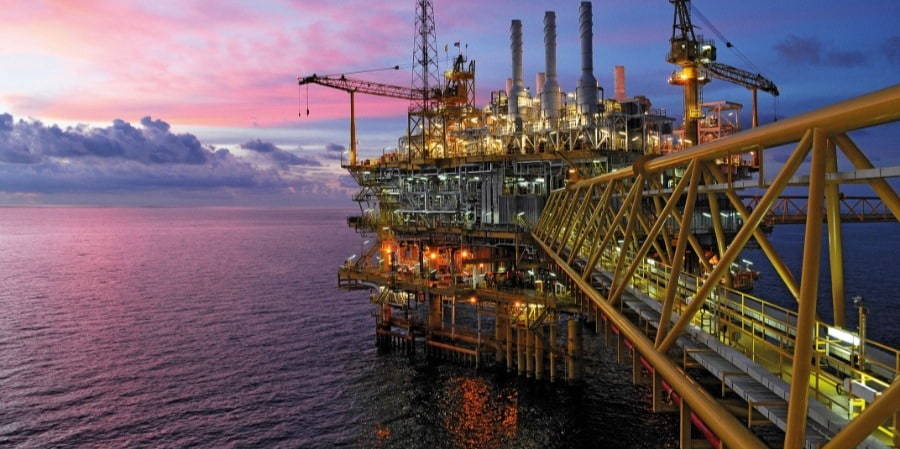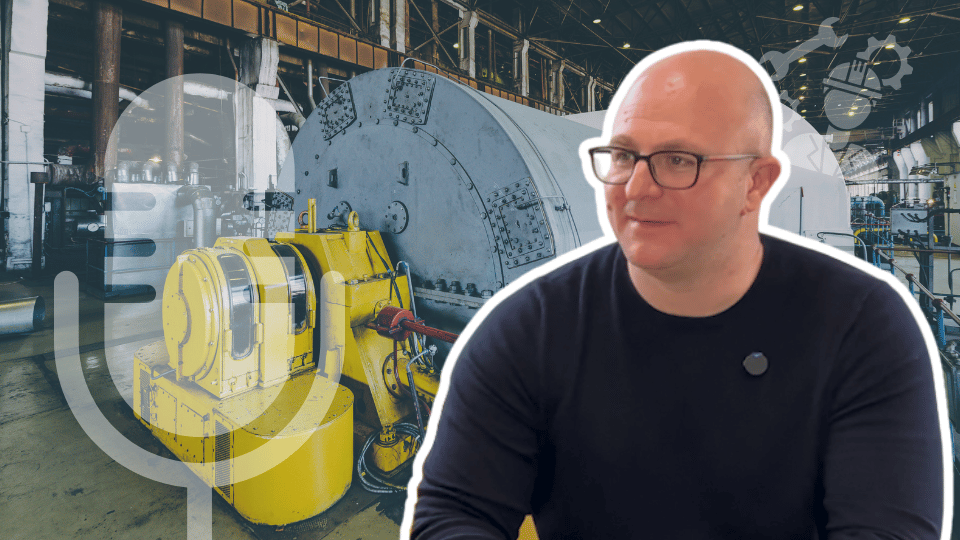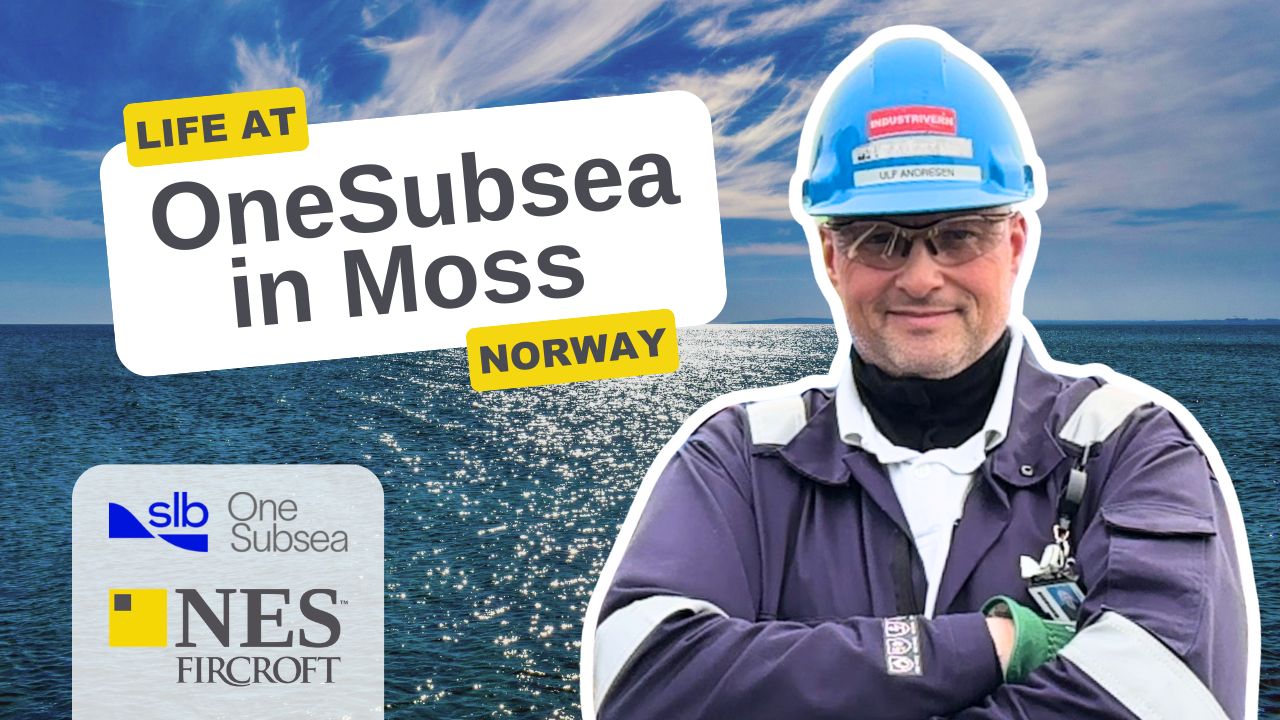The 6 Biggest Offshore Structures In The World
16 Jun, 20215:15For offshore oil and gas engineers, working and living on an oil platformmeans spending...

For offshore oil and gas engineers, working and living on an oil platformmeans spending all your time in the same space, miles out to sea. Fortunately, oil platforms are some of the biggest structures in the world.
Reaching down hundreds of feet to the seabed, the “height” of deepwater oil platforms dwarfs even the tallest skyscrapers and the platforms that sit above the water, full of technical equipment, storage facilities and accommodation for workers have their own impressive scales. Oil rig jobs are unlike any other workplace, just as the structures are unlike any other build.
To showcase the incredible nature of the largest manmade structures, here’s a list of the six biggest oil platforms in the world.
Berkut Oil Platform
The largest in the world, weighing over 200,000 tonnes and located in the Sakhalin-1 oil field off the Russian Pacific Coast.
The platform is subjected to sub-arctic conditions, meaning it had to be constructed to withstand the most extreme surroundings. It can withstand seismic shocks, waves up to 16m (52ft) tall and sea ice as thick as 2m (6.5ft). It has its own autonomous power supply and can keep working at temperatures as low as -44 degrees C.
The platform is built on a gravity-based structure (GBS), fixed to the seabed at a depth of 35 metres. Construction of the GBS alone required 52,000m3 of concrete and 27,000 tonnes of steel reinforcing bar.
The topside alone is 105 metres long, 60 metres wide and 144 metres high - about as tall as a 50 storey building. It weighs over 42,780 metric tonnes. Transporting and installing it on the GBS in 2014 required revolutionary methods and broke several world records.
The Berkut is built to extract 4.5 million tonnes of oil each year, from an oil field with an expected capacity of 64 million tons. Costing $12 billion, the platform was financed by the Sakhalin-1 Consortium - made up of oil companies from the USA, Russia, Japan and India.
NES Fircroft has already supported the Berkut with specialist workers, and continues to provide recruitment and workforce solutions to the ongoing project. Read more about the platform here.
Stones Floating Production, Storage and Offloading Facility
Stones is a project by Shell that uses an FPSO facility operating in the US Gulf of Mexico - around 322km off the coast of New Orleans. It is the deepest operating project, reaching a depth of 2,900 metres (9,500 ft) below sea level.
The FPSO, named Turritella, is a converted Suezmax tanker, secured in place using buoyant turret mooring (BTM) technology. It connects to a subsea infrastructure, pumping oil and gas from eight production wells.
The disconnectable buoy-equipped turret allows the vessel to turn with the wind or, in a heavy storm or hurricane, disconnect completely from the well so the vessel can sail to safer waters.
Steel lazy wave risers link the subsea systems to the BTM. This is a flexible pipe with additional buoyancy, creating an arched bend between the seafloor and the surface to absorb the motion of the FPSO and boost production performance at extreme depths.
This is the first project to use a disconnectable buoy configured with steel lazy wave risers, demonstrating the unique requirements of the ultra-deep area. It is also the first FPSO to be used in the Gulf of Mexico.
At peak production the project will produce an estimated 50,000 barrels of oil equivalent (boe) per day. The field is estimated to hold more than 2 billion boe.
Perdido oil platform
The deepest spar type oil platform in the world, the Perdido is moored in 2,450 metres (8,000 feet) of water and produces oil and gas from depths of between 2,300-2,800 metres (7,500-9,500 feet).
It’s a hub for three fields - Great White, Tobago and Silvertip - in the Gulf of Mexico. Twenty two oil wells are connected to a 44km (27 mile) network of pipelines on the ocean floor between them. In total, it has the capacity to handle 100,000 barrels of oil and 200 million cubic feet of gas every day.
The Perdido was constructed in Pori, Finland by the project management company Technip. It was transported 13,200 km (8,202 miles) to Texas over a span of five months in 2008. Computer-guided lasers marked out the measures to ensure precision during construction, with a major challenge being to ensure the build was optimised for the temperature change from Finland to the Gulf.
The cylindrical spar measures 170 metres (555 feet) and is moored securely to the sea floor. The hull has a height of 267 metres - almost as tall as the Eiffel Tower - and weighs 22,000 tonnes.
Above the spar are three topsides containing processing units, a drilling rig and living quarters. Together they weigh 9,500 tonnes and are manned by 172 workers.
Mars B/Olympus floating platform
The Olympus is a mammoth platform that operates within the Mars B field - the first deep-water project in the Gulf of Mexico to expand an existing oil and gas field with new infrastructure.
The original Mars field was discovered in 1989 and began producing in 1996. As the size of the field was realised to be larger, further infrastructure was built to get more oil from a wider area. Development of Mars B extended the life of the Mars field to at least 2050.
To date over 700 million barrels have been produced from the field.
Olympus took over production of Mars B in 2014, operating in a water depth of around 3,100 feet and produces around 100,000 boe per day. The platform weighs over 120,000 tonnes - heavier than 300 Boeing 747 Jumbo Jets. It’s 406 feet tall from the base of the hull to the top of the derrick, with a combined deck area of 342,000 feet squared - larger than an NFL superdome. The platform supports 192 offshore jobs.
Hibernia
Located in the North Atlantic, 315km (196 miles) east of Newfoundland, Canada, the Hibernia is a 450,000 tonne gravity based structure that first produced oil in November 1997. The structure has a 105.5m concrete caisson built from high-strength concrete, reinforced with steel rods and prestressed tendons.
To cope with the extreme arctic conditions, the caisson is surrounded by an icewall made from 16 concrete teeth. The structure was designed to withstand a collision with a one million tonne iceberg (expected to occur once every 500 years) and even a direct hit from a six million tonne iceberg (expected once every 10,000 years).
Within the gravity structure are the storage tanks for crude oil, with a capacity of 1.3 million boe. Two drill shafts, each with 32 drill slots, go to depths of 3,700 m below sea level to reach the Hibernia reservoir. Further drilling activity has taken place in the Avalon field, at a depth of 2,400m.
Over one billion barrels have been produced so far, with operations expected to continue for another 15 to 20 years.
The topside facilities of the Hibernia consist of five super-modules, including a processing wellhead, mud, utilities and accomodation for 185 people; plus seven topside mounted structures including a helideck, flareboom, piperack, main and auxiliary lifeboat stations and two drilling modules. The topsides have a design capacity of 150,000 barrels per day.
Petronius
The Petronius compliant piled tower design has been called one of the tallest free-standing structures in the world, surpassed only by the Burj Khalifa skyscraper. It stands at 609.9 metres (2,001 feet) above the seabed, though only 75 metres (246 feet) are above water.
The tower is exceptionally flexible so it can sway with the forces of the ocean rather than withstand them. It has a mooring system based on 12 piles, three at each corner leg, which extend 450ft through the mudline into the seabed.
The Petronius has a multi-deck topside, measuring 64 metres by 43 metres across and 18.3 metres high. It includes a 4,000 tonne North module and a slightly lighter South module. In total the structure weighs 43,000 tonnes.
The topsides support a full drilling-rig spread of 17 wells, including ten producing wells and seven water-injection wells. The tower can accommodate 21 well slots and has the capacity to handle 60,000 boe per day.
Work on one of the world's biggest oil platforms
NES Fircroft is proud to support incredible energy projects with recruitment and workforce solutions and contractor support services. Whether you are a client looking for recruitment support with the next phase of your new platform, or are an engineer seeking an oil and gas job, we can help you with the next step.
Register with us to set up your profile and job alerts for our latest vacancies.









